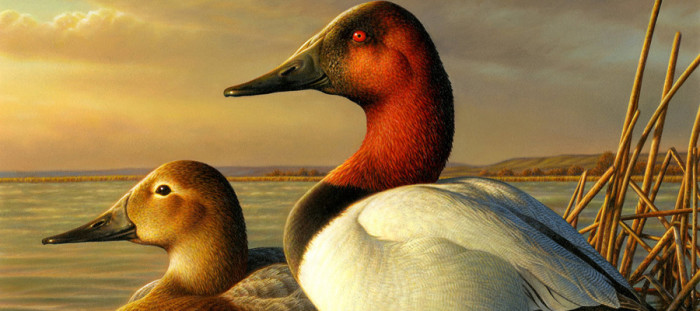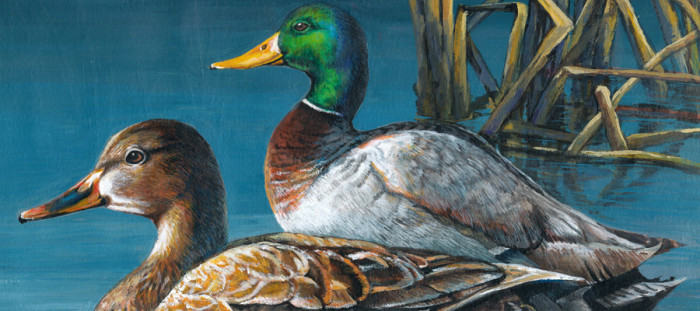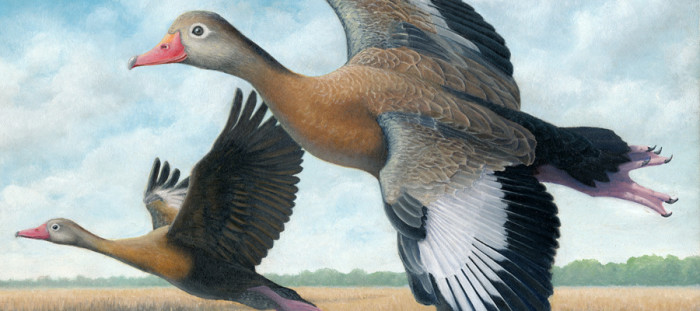A lot has changed since 1991. The price of a Federal Duck Stamp has not. For the last 23 years, duck stamps have cost $15. Members of the United States Senate are trying to change that. They hope to increase the price to $25.
The Federal Duck Stamp is officially named the Federal Migratory Bird Hunting and Conservation Stamp. Whatever you call it, it’s vital to waterfowl habitat restoration and protection.
According to the Ducks Unlimited website, “Since its enactment in 1934, the federal duck stamp program has protected more than 6 million acres of wetlands – an area the size of Vermont – through expenditures of more than $750 million. This has contributed to the conservation of more than 2.5 million acres in the Prairie Pothole Region, including the protection of 7,000 waterfowl production areas totaling 675,000 acres.”
The current price of the Duck Stamp is not up to date with inflation. In fact, the Federal Duck Stamp has lost 40 percent of its value because land prices have tripled since its price was last increased in 1991. With its buying power greatly reduced, the amount of habitat the Federal Duck Stamp can protect is also greatly reduced.
“For the last few years, I have actually been buying two duck stamps just to help conserve more waterfowl habitat. Nothing is more valuable in the fight to protect wetlands and nesting habitat than the Federal Duck Stamp. I absolutely believe the time has come to increase the price,” said Jeremy Stephens, a regional director with Delta Waterfowl.
Federal Duck Stamp sales matter immensely to waterfowl conservation because 98 percent of funds collected go directly to purchasing or leasing wetland habitat for protection in the National Wildlife Refuge System. Just to emphasize the point, that means 98 cents of every dollar spent on Duck Stamps is directly tied to on the ground habitat.
Whitney Twaney, a government affairs representative with Ducks Unlimited said, “Some people look at increasing the price of the Duck Stamp as a tax increase, but it’s absolutely not. Sportsmen, specifically waterfowl hunters, buy these stamps voluntarily.”
Sportsmen buy the stamps, yet the public benefits by having improved habitat for wildlife. This is just another example of hunter conservationists stepping up to do more than their share to protect habitat and promote healthy resources.
“The last duck stamp price increase occurred in 1991, when it reached its current level of $15. Back then gasoline was selling for $1 a gallon. Today a gallon of gas costs three to four times that amount. The price of land has likewise increased, but duck stamp revenues have not. We appreciate the introduction of a federal duck stamp increase bill by Senators Begich, Baucus, Coons and Tester to meet very real on-the-ground wetland habitat conservation needs. We are committed to seeing this legislation signed into law and look forward to working with senators on both sides of the aisle to enact this,” Ducks Unlimited CEO Dale Hall said.
Waterfowl hunters are a passionate group of conservationists. I doubt you will find many, if any, who are opposed to paying $10 more per year to hunt, when they know the trade off is protecting waterfowl for future generations.
This piece is a repost of an article written by Brandon Butler, the Executive Director of the Conservation Federation of Missouri.
Photos:
Georgia Duck Stamp 2013 Winning Artwork, Junior Duck Stamp Winner Best in Show by Euno Oh of Marietta, GA. Source: US Fish and Wildlife Service, Southeast Region
“Taking Flight” by Colin Williams, 2012 Georgia Junior Duck Stamp Best in Show Source: US Fish and Wildlife Service Southeast Region
2013 Federal Contest Winner, Federal Duck Stamp Contest, Adam Grimm of South Dakota Source: US Fish and Wildlife Service



